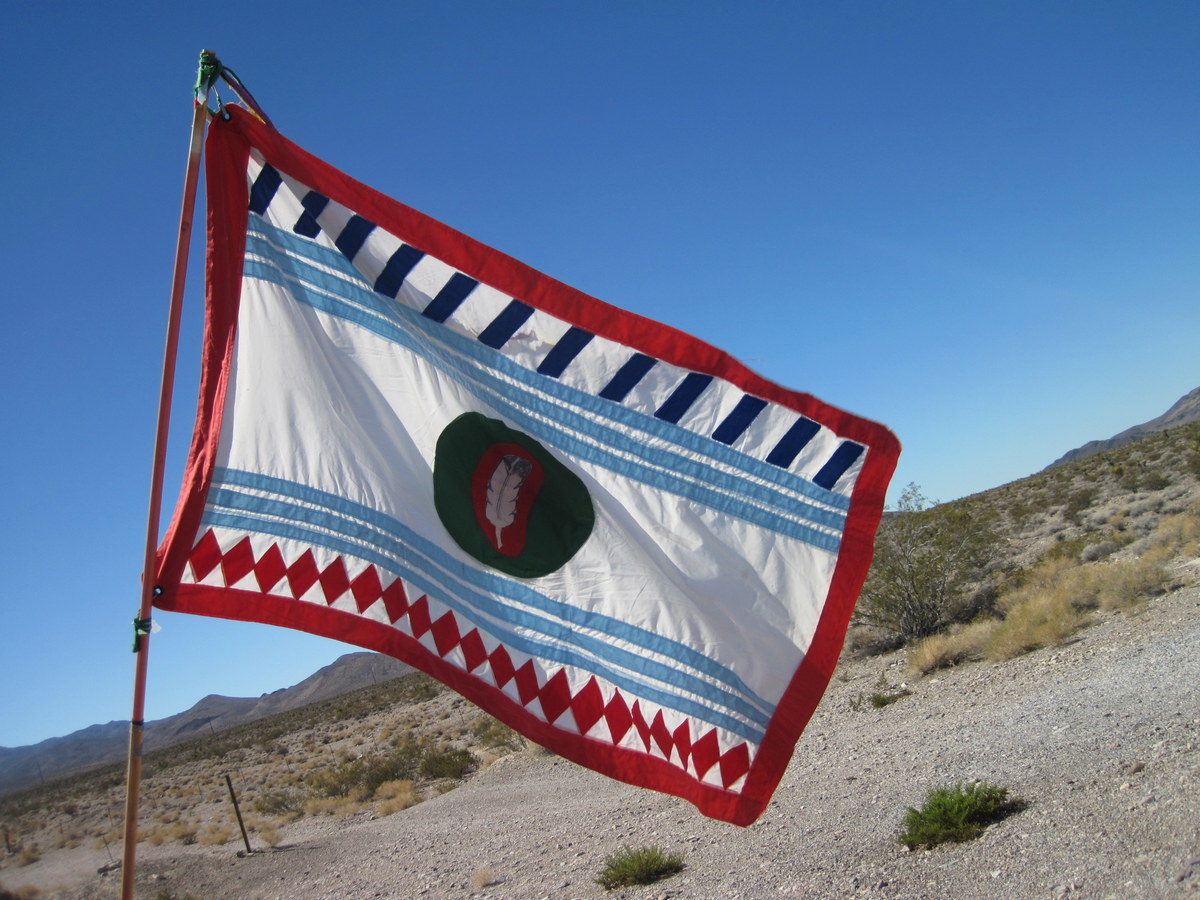
Sonny Ledford is sharpening his battle axes. “I will tell you a story,” he says.
About a dozen of us are listening to him talk outside the Museum of the Cherokee Indian, on the Eastern Cherokee Indian Reservation, nestled deep in the Smokey Mountains of North Carolina.
The story involves cemeteries. Sonny, who is dressed in traditional clothes and decorated in tribal tattoos and beads, describes an archeological professor and his students involved with a dig of some old Native American burial mounds. After a day’s work in the field, the group went to a nearby restaurant for dinner and Sonny confronted them.
“You know that cemetery in the middle of town?” he asked them. They nodded.
“What would happen if I went over there with a shovel and started digging up the graves?” said Sonny. “How long do you think it would take me to get arrested?’”
“You’d be arrested pretty quickly,” said the archaeologist, “a lot of the folks who live across the street have relatives buried there.”
Sonny nodded and gave the gathering time to digest the irony of the situation. Then he left. “The student’s mouths were on the floor,” he said.
His anecdote reveals a stunning additional grievance for Native Americans. Not only has their treatment in American history been ruthless, even in death they don’t have peace.
In 2007, construction crews building a multi-billion dollar planned community—called Playa Vista—on a Los Angeles area hillside with fabulous views of the Pacific Ocean uncovered the graves of more than 400 Tongva Indians. The tribe was one of several that occupied the Los Angeles Basin for more than a thousand years. In the 16th century, Spanish explorers and missionaries arrived.
The Playa Vista site is probably the biggest Native American burial ground ever found in California, NPR reported in a story at the time. “This is perfect evidence of how little protection Native American burials and Native American culture resources have,” said Dr. Cindy Alvitre, a professor at California State University, Long Beach and member of the Tongva tribe.
When burial sites are found, “the most tragic things that happens,” said Dr. Alvitre, is the Native remains “become objectified. They’re no longer human beings. And at that point, we lose any connection to them as our relatives.”
There are many other examples. In Racine, Wisconsin, a sacred Native American burial mound was recently put on sale. “Experts say the mound is being sold for only $16,000,” lamented one local news article, “when it should not be sold at any price…a dig should not occur to disturb these grounds no matter who pays for it.”
And on an islet off the coast of British Columbia, a luxury home was recently built over the top of the sacred burial cairns of the Coast Salish, a loosely-related group of West Coast Native peoples. “For First Nations, there is no other act more offensive than to disrespect the dead,” wrote Adam Olsen, in a 2014 Huffington Post Canada article. Olsen is a Green Party leader and member of the Tsartlip First Nation, in British Columbia.
“This is a notion we all can understand; non-aboriginal cemeteries are sacred too,” writes Olsen. “A fundamental inequity exists. Kick over a grave marker in Ross Bay Cemetery and there is public outrage; propose a house above First Nations burial cairns and, as long as you follow ‘due process,’ it’s given the green-light.”
There is some protection. The 1990 Native American Graves Protection and Repatriation Act states that descendants of those interred must be consulted and have a say in exactly how the graves are handled and disposed of. Native American cultural items, such as human remains, funerary objects, and sacred objects, are supposed to be returned to the descendants, too.
But the Playa Vista case illustrates the problem with that policy. Even when cultural items are returned, arguments can erupt within tribes about just what to do with the items and where and how to store them. Furthermore, these once intimately human objects can take on the more distant tone of a museum piece.
“What they’re constructing is a glorified obituary that keeps us fixed in the past,” said Dr. Alvitre. “It’s a beautiful distraction so that people will continue to believe that we do not exist in the present.”
But there is a new hope, a new way. On a 1.9 million acre patch of Utah desert studded with exquisite canyons and arches and containing more than 100,000 archaeological sites, including many burial sites, some 26 western tribes have come together to propose a park called Bears Ears National Monument. Grave looting has occurred and destructive off-road vehicle use is rampant. Natives have called this parcel of land home for centuries. Natives have called for its protection. Natives will help operate the park. It will be open to everyone. And the graves, at last, would be preserved.










https://18.136.115.177/
Thanks for the article! Just browsing around online I get into some information
you can visit for your information
Jeff Chambliss
As a child, I walked fields, collecting “Indian rocks”. I often thought of who made them. What were those people like. As I got older, my interest shifted to visiting with those people, and found them to be just like myself. Very human. The dead should never be disturbed. Why walk on a burial mound and not a modern grave? Same thing. I have respect for those that have passed no matter what their names are. If you have a question, just ask an “Indian”. Don’t dig up their relatives .